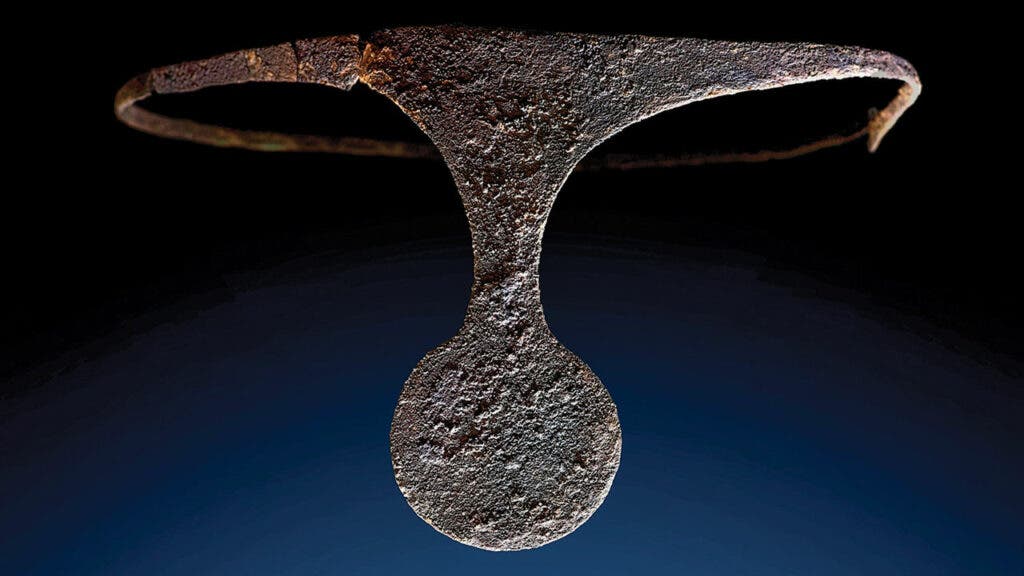
In the time of the Bronze Age — a period that stretches from 2200 BCE to 800 BCE when humans learned how to cast bronze — society was already rife with inequality. Hierarchies not only applied to social classes, but also to genders, with anthropologists generally agreeing that Bronze Age societies were patriarchal. But at least in the Iberian Peninsula, women — not men –may have reigned.
Inside a tomb uncovered in 2014, at a site known as La Almoloya in Spain, researchers have found the remains of a richly adorned woman. There are no written accounts or records that can identify her, but the evidence suggests she was a high-ranking member of her society and may have even been its ruler.
The tomb was found below a palace-like structure perched on a rocky hilltop. The structure was built by the El Argar culture, which represents the first true state to appear in the Iberian Peninsula.

From their foothold on the Murcia coast, established about 2200 BCE, the Argarians expanded rapidly along the west coast as far as the present-day border between Granada and Málaga provinces, northeast as far as Alicante and inland to cover the copper and silver deposits in the eastern end of the Sierra Morena. By 1700 BCE, the Argat state covered a land area of over 33,000 square kilometers.
Argarians employed technologies, pottery production, metalworking. They were also known for their intramural burial practices, that is, burials that took place within a building, normally the dwelling. Another burial custom was the placement of grave offerings, including a limited set of metal weapons, tools, and ornaments, as well as highly standardized and finely burnished clay vessels.
Both the building and burial objects can indicate the status of the people who were buried. And based on the artifacts found at Grave 38 — a princely tomb in the La Almoloya site containing the remains of two individuals, a male and female — this burial looks like it was meant for royalty.
Grave 38 was dug right beneath a relatively large room that lacked any artifacts you’d typically expect to find in a household, such as tools, pottery, or various cooking utensils. Instead, the room only contained some stone benches alongside its walls, which suggests it may have served as a place of governance.
The man was aged between 35 and 40 while the woman was between 25 and 30. Researchers don’t know how the pair died, but there were no signs of physical trauma so perhaps they may not have died violently. Genetic analysis showed that the two weren’t related but they formed a couple judging from the DNA of their daughter who died in infancy and was buried nearby.

The man wore a copper bracelet and golden earlobe plugs — that’s pretty high status for the time. However, he looked like a serf in comparison with the woman, dubbed the “Princess of La Almoloya,” who wore several silver bracelets and rings, a beaded necklace, and a silver diadem adorning her skull.
The lavish jewelry suggests that it was, in fact, the woman who was of much higher status than the man. Perhaps she was the ruler of her society, which would challenge the idea that state power in the Bronze Age was exclusively in the hands of males.
Since there are no written records left from these times, researchers can only speculate. Maybe she was the wife of the king, or maybe he was the husband of the queen.
But it may very well be the latter, judging from other indirect evidence. In the journal Antiquity, archaeologists at the Autonomous University of Barcelona wrote that the graves of some Argar women were reopened generations later, a practice that likely conferred a great honor.
Earlier research also showed that elite Argarian women ate more meat than other women, suggesting that they may have had real political power. Other burials of high-status El Argar women also indicate great wealth, but men were never buried with such riches.
What’s more, the scientists compared the diadem found at La Almoloya with four others found at different tombs from the El Argar society, and found they were all very similar and very valuable.
So, there seems to be a pattern here suggesting that elite women in Argar culture were valued higher than men, or at least they were wealthier and, perhaps, by extension more powerful.
“In the Argaric society, women of the dominant classes were buried with diadems, while the men were buried with a sword and dagger. The funerary goods buried with these men were of lesser quantity and quality,” the researchers wrote in their study. “As swords represent the most effective instrument for reinforcing political decisions, El Argar dominant men might have played an executive role, even though the ideological legitimation as well as, perhaps, the government, had lain in some women’s hands.”






